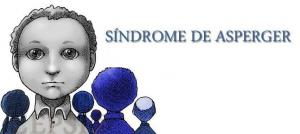Kabuki syndrome: symptoms, causes and treatment
There are a large number of rare and little known diseases They don't get enough attention. These disorders represent great suffering for the people who suffer from them and their families, who cannot understand what happens, how and why with their loved one.
The lack of research and the few known cases make it difficult to determine both the causes and ways to cure them or to alleviate or delay their progress.
One of these little-known diseases is kabuki syndrome, which this article is about.
- Related article: "Fragile X Syndrome: Causes, Symptoms, and Treatment"
What is Kabuki syndrome?
Kabuki syndrome is a strange and unusual disease in which the sufferer manifests a series of distinctive physiological characteristics together with an intellectual disability and physiological alterations that can be very serious.
Kabuki syndrome is considered a rare disease, with a relatively low prevalence and with little-explored and little-known characteristics and causes. In fact, there are still no clear diagnostic methods
to detect this disease, beyond the observation of the typical characteristics and development of the child.In general, it is considered that the most characteristic signs are facial alterations, intellectual disability, developmental delay, fingerprint abnormalities and the presence of musculoskeletal abnormalities and heart disease congenital
Despite its severity, the life expectancy of babies born with this disease it may not be less than usual, although this depends to a large extent on the complications that may arise, especially with regard to cardiac and visceral alterations.
- You may be interested in: "Intellectual and developmental disability"
The symptoms
At the physiological level, people with this disease usually present characteristic facial features, such as the presence of eversion of the lateral third of the lower eyelid (excessive folds in the skin of the eyelids that allow seeing the inner part of the latter from the outside), lateral opening of the eyelids elongated in a way that resembles the physiognomy eye of the oriental people, wide nasal bridge and with the tip inward, large ears and in the shape of a handle and thick eyebrows and arched. The teeth also tend to present alterations.
Besides it are often stunted and have short stature, presenting skeletal alterations such as the presence of fingerprint anomalies (especially alterations dermatoglyphics and persistence of fetal padding), hyperlaxity and hypermobility or spinal abnormalities vertebral. Hypotonia or muscle weakness is also very common, sometimes requiring a wheelchair to get around.
Subjects with Kabuki syndrome also present a mild to moderate degree of intellectual disability, in some cases together with neurological problems such as atrophy or microcephaly.
It is common for them to also present visual and hearing problems, as well as sometimes seizures. It is also common for them to have a cleft palate and swallowing difficulties, or very narrow airways that make breathing difficult.
One of the most serious and dangerous symptoms of this disease is that it causes alterations in the viscera, being very common that the majority of patients present serious coronary problems such as coarctation of the aortic artery and other heart diseases. Other parts of the body affected are usually the urogenital and gastrointestinal systems.
Not a very clear etiology
From the time that Kabuki syndrome was first described in 1981 the origins causes of this disorder have been unknown, there being a great ignorance of its causes throughout history since its discovery.
Despite this, current advances have caused it to be known that it is a congenital and not an acquired disease, probably of genetic origin.
Specifically, it has been identified that a large part of the people (around 72% of those affected analyzed) who suffer from this strange disease have some type of mutation in the MLL2 gene, which participates in the regulation of chromatin. However, it must be taken into account that other cases do not present such alterations, so a polygenic cause of this disorder can be suspected.
- You may be interested in: "Tourette syndrome: what is it and how does it manifest itself?"
Treatment
Due to the fact that it is a congenital disease of which there is still little knowledge, its treatment is complicated and focused on improving the quality of life of the patient and treatment of symptoms, as there is no known cure.
It must be taken into account that people with Kabuki syndrome often have a level of intellectual disability mild to moderate, which makes it necessary for them to have an education adapted to their needs. It is also common for them to present some typically autistic.
Language delays and the presence of behavioral disinhibition can be treated with the help of language therapies, and occupational therapy may be helpful so that they learn to better manage basic skills for daily life. Sometimes they may need a wheelchair to get around. Physiotherapy can be of great help when it comes to improving their motor skills and strengthening their musculoskeletal system.
Medically they have to undergo regular check-ups and may be required the application of various surgeries, given that they frequently present congenital abnormalities that cause a risk to their survival, such as changes in the heart and cardiovascular system, the respiratory system, the digestive tract and the mouth.
The presence of hernias, nutrient malabsorption, and atresias or occlusions of natural openings such as some of the nostrils may also require surgical treatment or pharmacological.
Regarding psychological therapy, may be necessary to treat some of the mental disorders that these subjects may suffer, as well as to provide information and educational guidelines for both the subject and their environment.
Bibliographic references:
- Niikawa, N.; Matsuura, N.; Fukushima, Y.; Ohsawa, T. & Kajii, T. (1981). Kabuki make-up syndrome: A syndrome of mental retardation, unusual facies, large and protruding ears, and postnatal growth deficiency. J Pediatric; 99:565-569.
- Suarez, J.; Ordonez, A. & Contreras, G. (2012). Kabuki syndrome. An Pediatr, 51-56.

